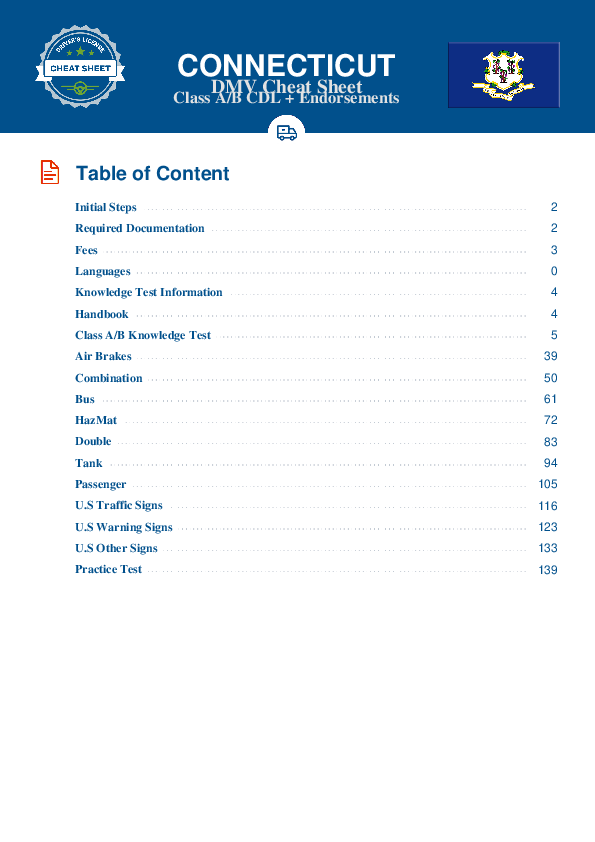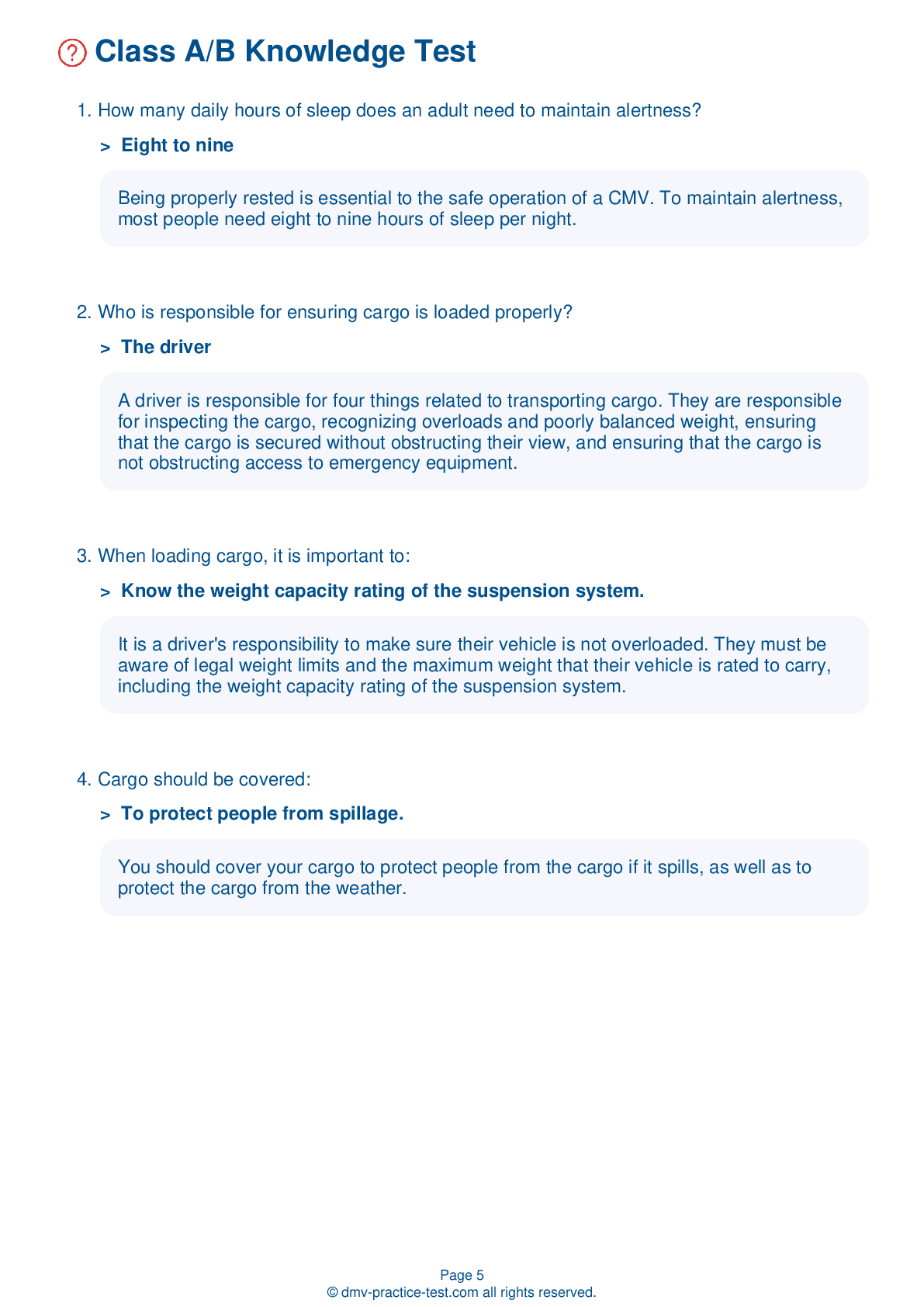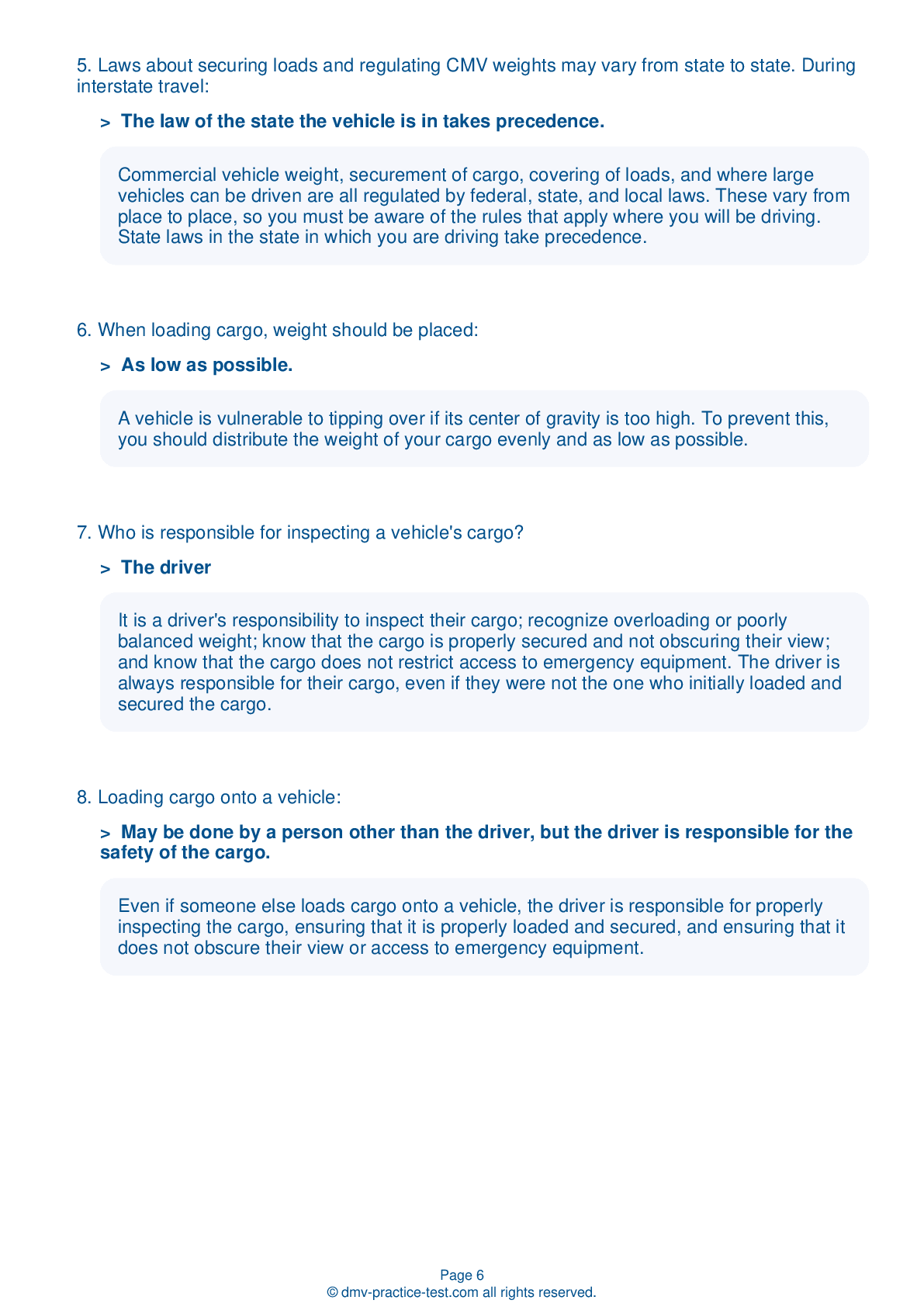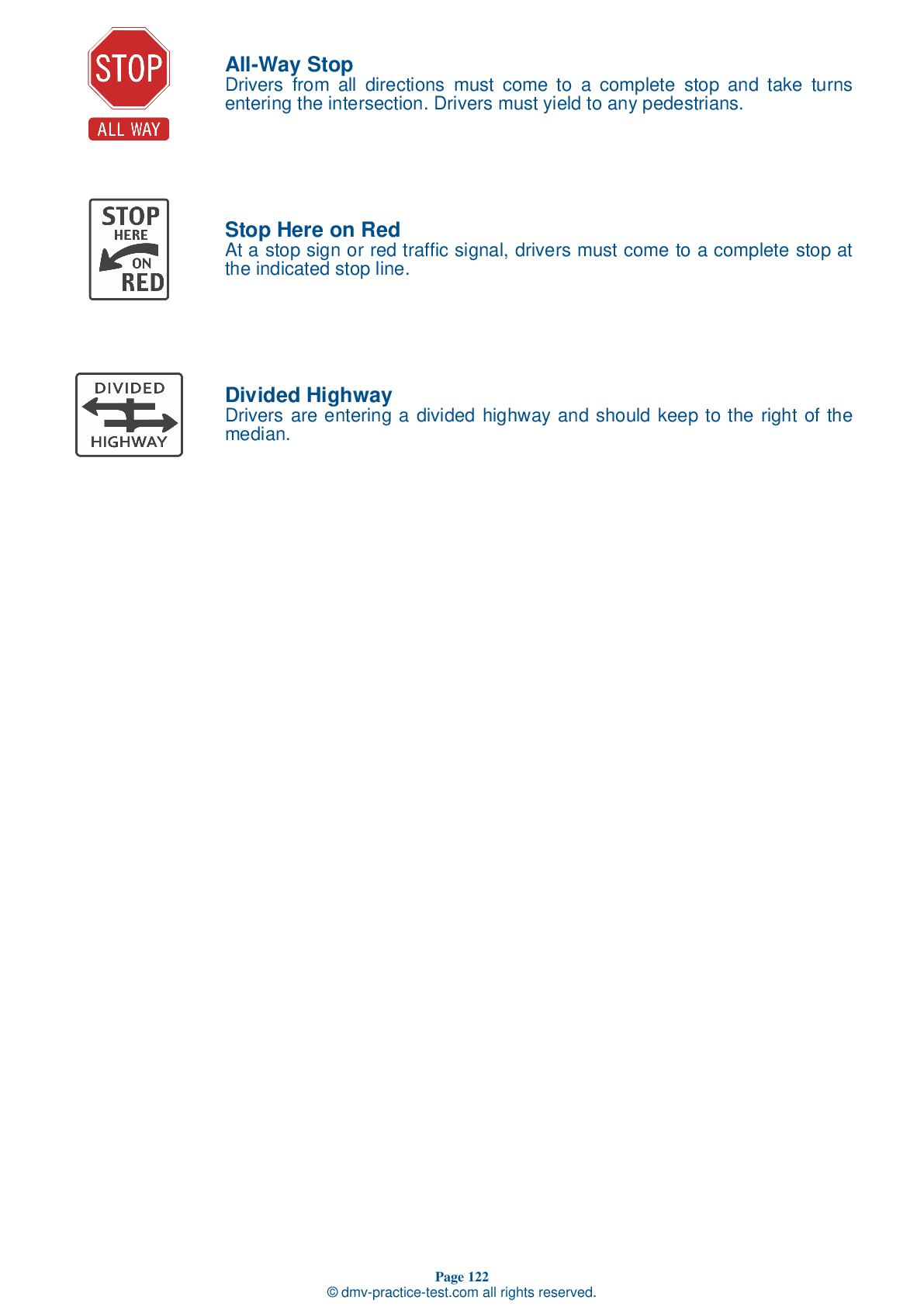Knowledge Test Class A #2
Class A Driving Test | Connecticut 2025 #2
Train for FREE online with our Connecticut class A license test. The official exam test consists of several obligatory parts, with all of them checking your knowledge of different blocks of road rules. If you need to obtain a CT CDL class A permit in 2025, practice as much as possible. Free sample tests published on our website will help you check and improve your knowledge and boost your grades. Please bear in mind that CDL class A requirements may vary from state to state.
50
40
20
1 . Which of the following is not an example of a distracted person that motorists should be worried about?
A person sitting on a bench waiting for a bus
You should be cautious when you are near people who are not paying attention to the road. Be wary of drivers who are engaged in conversation with passengers, children near the road, and road workers.
2 . A low air pressure warning signal:
Any vehicle with air brakes must be equipped with a low air pressure warning signal.
3 . When entering a curve, you should:
Take the vehicle out of gear.
It is important to take turns and curves at a safe speed. You should always downshift before entering a curve.
4 . When taking the basic control skills test, drivers are:
Allowed to leave the vehicle, but only if the vehicle is placed in neutral and the parking brake is set.
During the basic vehicle control skills test, you must place the vehicle in neutral and set the parking brake before exiting the vehicle to check its position. You may check the position of the vehicle no more than twice, except during the straight line backing exercise, where you may look no more than once.
5 . The safety valve located on the first tank opens:
After every stop.
In an air brake system, the first tank that receives compressed air has a safety valve that releases air if the pressure gets too high. It is usually set to open at 150 psi. If the valve must open, there is a fault in the system that should be repaired by a mechanic.
6 . While driving, if it is discovered a vehicle's ABS is not working, the driver should:
Use their parking brake to stop.
If an Anti-Lock Braking System (ABS) is not working, the vehicle's basic braking functions are still intact. The driver should continue to drive and brake in a normal fashion.
7 . You may be able to identify a distracted driver by if they are:
You may be able to tell that another driver is distracted if you can see them drifting within a lane or across lane dividers; traveling at inconsistent speeds; being preoccupied with a cell phone, a map, food, or other items; or engaging in conversation with passengers.
2025 Connecticut | Frequently Asked Questions
A CDL Class B license in Connecticut allows you to operate single vehicles with a gross vehicle weight rating (GVWR) of 26,001 pounds or more, or any such vehicle towing a vehicle not exceeding 10,000 pounds GVWR. It includes vehicles like straight trucks, large buses, segmented buses, and trucks towing smaller vehicles.
A Class B CDL license in Connecticut enables the holder to operate single vehicles with a gross vehicle weight rating (GVWR) of 26,001 pounds or more, or tow a vehicle not exceeding 10,000 pounds GVWR. This includes straight trucks, large passenger buses, segmented buses, dump trucks with small trailers, and trucks towing smaller vehicles.
To acquire a Class B CDL license in Connecticut, you must be at least 21 years old (18-20 for intrastate driving), possess a valid Connecticut driver's license, pass a vision test, and successfully complete a knowledge test. After that, you must obtain a Commercial Learner's Permit (CLP), hold it for 14 days minimum, and pass a skills test.
In Connecticut, you must be at least 21 years old to qualify for a Class B CDL license for interstate transport. However, if you plan to drive only within the state (intrastate transport), you can qualify at 18 years old. It's important to note that additional requirements must also be met.
Specific endorsements are not necessary for a Class B CDL license, but they can expand your job opportunities. Endorsements certify additional skills like operating a school bus (S), passenger vehicle (P), or tank vehicle (N). You can also get an H endorsement for transporting hazardous materials. Each endorsement requires passing an additional knowledge test.
The Class B CDL skills assessment in Connecticut includes three parts: a pre-trip vehicle inspection test, a basic vehicle control test, and an on-road driving test. These tests assess your ability to inspect your vehicle, control the vehicle in various situations such as backing and turning, and safely operate the vehicle in traffic.
Yes, Class B CDL license holders in Connecticut are restricted to driving single vehicles with a gross vehicle weight rating (GVWR) of 26,001 or more pounds, or a towed vehicle not exceeding 10,000 pounds GVWR. They cannot drive a combination of vehicles (like a tractor-trailer) unless they have a Class A CDL. Additionally, they must comply with federal hours-of-service regulations.
Yes, the written Class B CDL test in Connecticut can be taken in languages other than English. The Connecticut Department of Motor Vehicles provides the test in several languages. However, federal regulations require that all CDL holders must be able to read and speak English sufficiently to converse with the general public, understand highway traffic signs and signals, respond to official inquiries, and make entries on reports and records.
Yes, you can request accommodations for the Class B CDL written exam in Connecticut if you have a disability. The Connecticut Department of Motor Vehicles complies with the Americans with Disabilities Act (ADA) and provides reasonable accommodations like extra time, a separate testing room, or use of special equipment. Be sure to make your request well in advance of your scheduled test date.
Yes, if you fail the Class B CDL written test in Connecticut, you can retake it. However, you must wait at least 7 days before retesting. There's also a retest fee that you'll need to pay each time you retake the test. It's recommended to study the manual thoroughly before retaking the test to increase your chances of passing.



